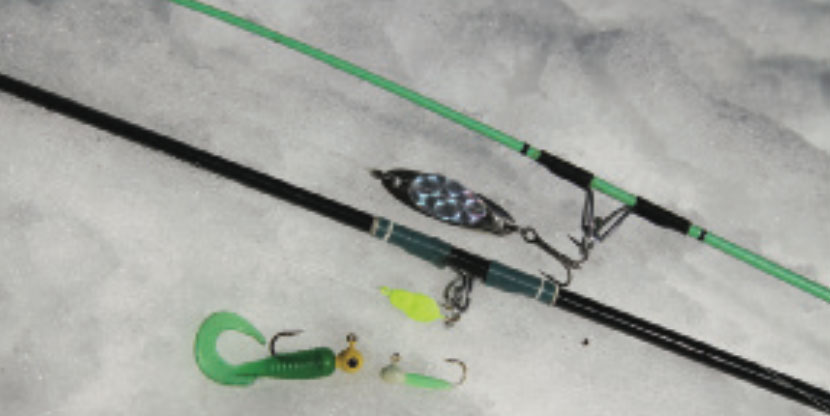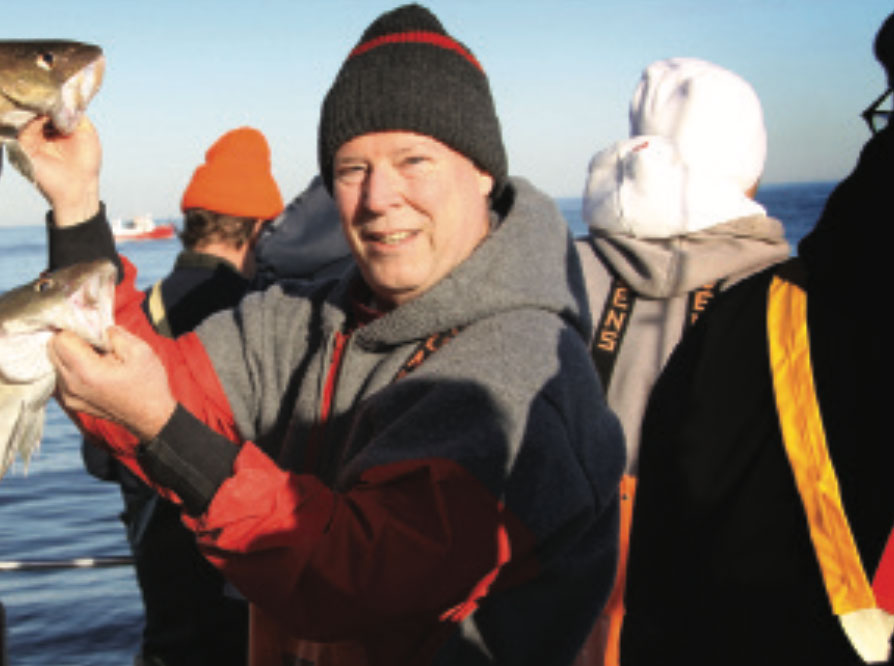By Tom Schlicter

Happy New Year! You realize, of course, that it’s time to start fishing again, right? After all, you’ve got all those mint holiday gifts to try out, the message boards are already speculating about cod, herring, white perch and tidal trout, and there’s little to do in the way of yard work that can’t be put off for a bit. Save for NFL play-off and Super Bowl parties, weekends should be pretty-much open now that all the obligatory family get-togethers have come and gone.
So, then, what’s keeping you at home? Oh, yea, it’s cold outside. Well, that can be a problem – but not one that can’t be conquered by dressing in layers, wearing wool knit hat, wearing boots or “skins” and bringing along a pair of waterproof gloves. Choosing to sail or fish when the wind lays low and temperatures moderate is another good idea – although you find the colder it is out the less company you are likely to have and for some, that’s worth a little extra shivering.
While wintertime options are a lot thinner than summertime choices here in the Northeast, you’ll find the fishing can be surprisingly reliable if you keep abreast of the latest reports and time things right. Codfish are the traditional choice, but ling, herring, white perch and any freshwater fish that can be pulled through the ice like bass, pickerel, trout, and yellow perch are all in play this time of year. Heck, you can even go fly- fishing at Connetquot River State Park Preserve.

I like early winter cod fishing for two reasons: first off, local wrecks haven’t been picked clean as yet and your odds of catching a 20-pound plus cod or big pollack improve dramatically the first few times a skipper hits a particular wreck each season. Try to get on the first offshore wreck trip of the New Year aboard your favorite boat, or jump on the first trip following a prolonged stretch of bad weather so the wrecks have had a few days to restock.
While many anglers with recent cod fishing experience favor high-low rigs or diamond jigs for hooking up these days, old salts often take party boat pools by keeping things as simple and uncomplicated as possible. Using two hooks around wrecks increases your chances of snagging, especially when a big fish tries to burry itself in the snags. For this reason, veteran codders often prefer a single-hook bottom rig, and many fish their skimmer clam baits it with a little slack in the line.
You’ll find some boats sailing for cod on the West End, too, but at this sector of Long Island, ling are more often the focus. The fishing is pretty much the same as codding, except for using slightly smaller hooks, and the action tends to me around wrecks or in the 17-Fathoms area. This can fill the cooler action, especially on calmer days when it’s easy to keep your bait on the bottom and feel the light taps of ling. Be aware, however, that ling are soft-fleshed fish so, if you want them to taste supreme when you get home, put them on ice the minute you catch them – even if it’s freezing outside.

If offshore fishing isn’t your idea of fishing fun, herring can be a great inshore option. This silvery winter delight been somewhat unreliable in recent years but there is usually a decent run inside Mount Sinai Harbor on the North Shore of Long Island and at Magnolia and Coney Island piers on south side. Sabiki rigs, jigged lightly, are the usual offering. The Captree and Jones Beach Piers also offer some herring action, although these locations are even less reliable. If the herring run is thick, catching them during daylight hours is little problem. Generally, however, the bite is better after dark with the hours between 10 p.m. and 2 p.m. the most productive and a street light casting its glow upon the water a key ingredient for success.
There are also plenty of herring to be found along the Connecticut coast, with solid catches usually made from shore at the Fairfield County marinas (ask permission to fish from the docks – don’t trespass,) the Cummings Point Beach fishing pier and the fishing pier at Stratford.
If you still have an itch to target stripers, the bass fishery on the lower Housatonic River can actually be outstanding this time of year. The bass here are of mixed sizes with a good representation of bigger fish in the 20 – to 30-pound class plus some bruisers pushing 40 pounds. Soft plastics like Fin-S-Fish in pearl or pink are the way to go according to David Molnar, a Fisheries Biologist with the Connecticut DEEP.
On the freshwater front, you might be surprised at how cooperative panfish can be in open water. With a slight warming spell serving as their prompt, bluegill, crappie and yellow perch will often respond to a 1/64- or 1/32-ounce white, pumpkinseed or yellow jigs tipped with a mealworm, grass shrimp or garden worm. This is not big-game fishing but it can be fun and will get you out of the house. Place a small oat 24 to 48 inches above the jig, cast out as far as possible into open water, and then simply allow the wind to move your offering slowly across the water. If the float tips, wiggles, stops or moves in the wrong direction, set the hook with a gentle motion. Local mill ponds and shallow lakes are ideal for this approach. In deeper waters, you might want to try simply setting half a worm or a couple of wax worms on the bottom with a split-shot or two for weight.
If all else fails, there are always a few tidal trout to be found at Bubbles Falls, Rattlesnake Creek and the Nissequogue River’s Whites Pool. Berkley Power Baits, night crawlers and cheese balls work well at all three spots. While you’ll mostly catch small brookies which must be released, an occasional chunky rainbow and the possibility of a trophy brown exceeding four pounds should help keep you on your toes.
And then there’s ice fishing; solid ice is never a sure bet along the coast, but most years see some solid surfaces in mid-to late January. On Long Island, try hitting Lake Ronkonkoma for a shot at walleye, white perch, crappie and maybe a largemouth or smallmouth bass. Laurel Lake on Long Island’s North Fork is another possibility. Here, you’ll find trout, bass, pickerel, yellow perch and panfish.
Small tear-drop style jigs tipped with wax worms will work on the panfish, but you’ll want something a little larger like a Rapala Jigging Rap, Swedish Pimple or live shiner suspended beneath a float to entice the ‘eyes, picks and bass. On the Connecticut side, Beach Pond in New London County and Gardiner Lake in Salem both offer superior walleye fishing while further inland, Candlewood Lake is loaded with crappies and panfish, plus walleye, trout and bass.
By Tom Schlicter